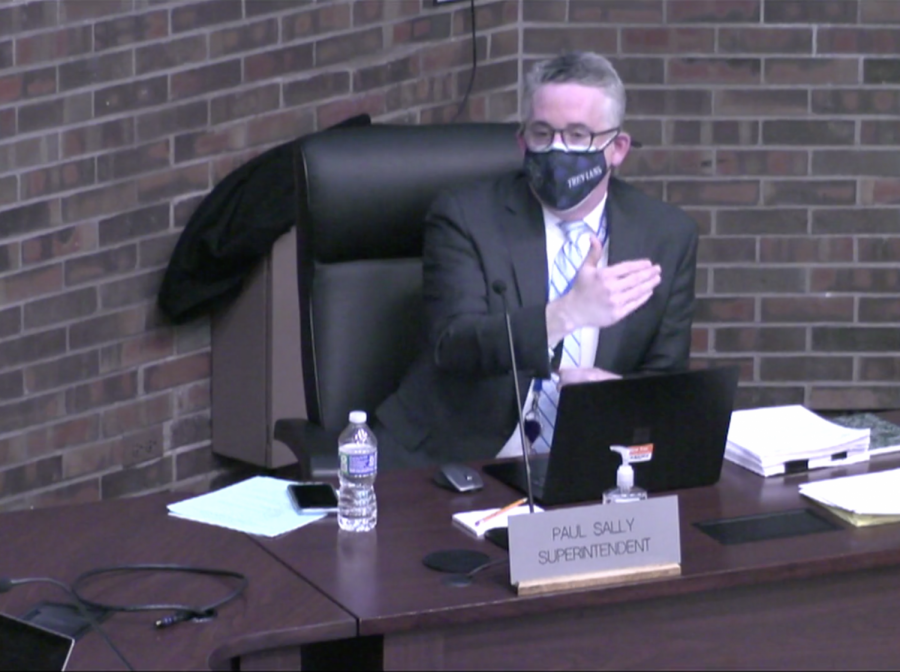School offers four day option due to low attendance
Students concerned about safety, but see the benefits as well
Superintendent Paul Sally answers questions about the logistics of the new four day option during the board meeting on Feb. 16
New Trier has begun a new and controversial four-day-a-week option for students on the Winnetka campus. The new rule has already boosted the average attendance rate from 27 percent to 34.5 percent, according to school surveys.
School officials say they can safely have more kids in-person and continue to prevent transmission inside the school. The Board says space is available and wants to fill it by letting students opt-in to attend in-person four days a week.
“Our classrooms do have some [extra] seats in them, our lunchrooms and free space areas do have seats in them and then we have a few areas with very few students,” said Superintendent Paul Sally in a board meeting on February 16.
Safety remains a large factor for many students. The school is still dealing with the consequences of student gatherings and external factors.
“Certainly there are incidents outside of school which can impact the number of students that not only get COVID, but also the number of students that are quarantined so we’ve seen that surge,” said Sally.
For instance, students worry that this option will cause classrooms to overflow because of social distancing. Some teachers already send kids outside of the classroom once capacity is reached. There, students connect through Zoom as if they were remote learning.
“My main concern is if too many people pick up that option, there’s no way to safely execute that, and I didn’t see a plan for how they would prioritize different people,” said senior Maya Crystal.
The current plan is to leave the decision up to individual teachers on who should leave in the case of a full room. So, if a teacher has students doing group work, they might put chairs outside of the classroom if they reach capacity inside the classroom.
“It just depends on the enrollment of your class, how many [students] are coming in, and how you manage that,” said Principal Denise Dubravec.
Some students disagree with the decision; for them the difference between remote learning and “remote in-person” are too similar and pose more risk than benefit.
“It’s sending a poor message that their goal is to just try to get bodies into classrooms instead of actually investing in the learning of students,” said Crystal.
Students are also concerned with the lack of quantitative data and when certain safeguards or restrictions would be prompted.
“I feel that’s really unclear, they have these color coded charts with whatever, but they had 50 students positive and 150 people quarantined and they were still pushing with more people in person,” said Crystal. “I feel like the metrics are meaningless unless you have a defined point at which you step down.”
But, instead of having an “on/off switch”, the administration emphasizes on deciding in board meetings what to do based on data. For example, if transmission inside the school increases, the board would try to trace the cases with patterns and connections, and then find the students involved to quarantine them or carry out further actions.
“We’re looking at the cumulative data in these Wednesday meetings and getting that information to the board and determining what the next steps are,” said Sally.
Some students support the plan, as long as the school can manage to keep them safe. To satisfy the conditions of students who need special instruction, allowing more people to do in-person more frequently is a viable option, according to several students.
“If people need to come back to school and if they have some sort of issue, for example, a focusing issue and have to come back to in-school, that’s important,” said sophomore Camille Rose.
The administration also affirms the four-day option is not mandatory, mentioning that students must opt-in with a parent approval.
“It really is going to be an open invitation,” said Sally. “We’re constantly watching for struggling students and that process is ongoing.”







































